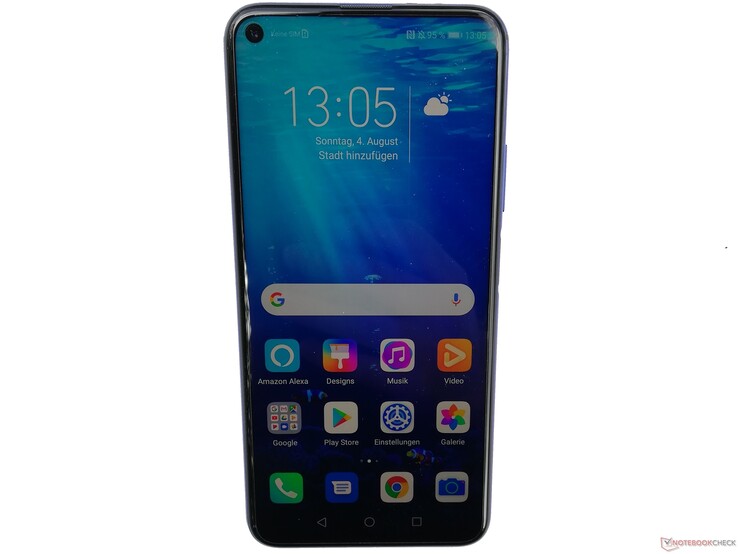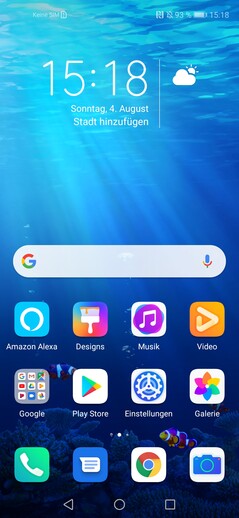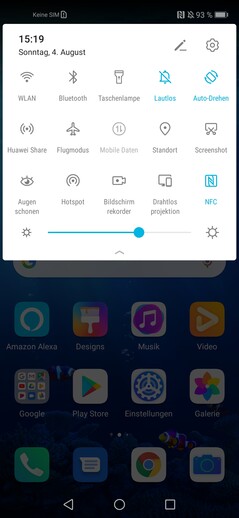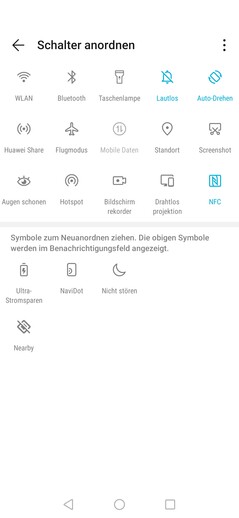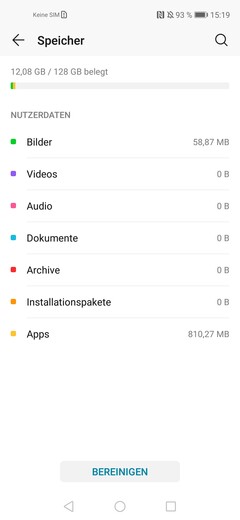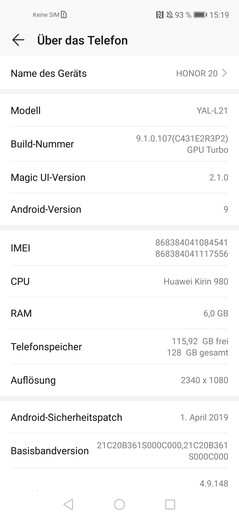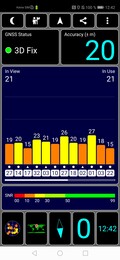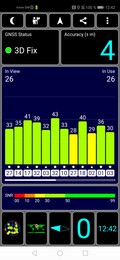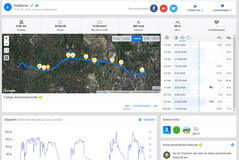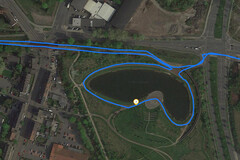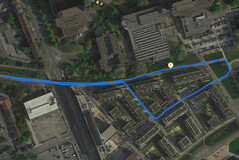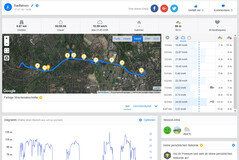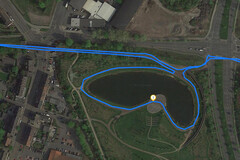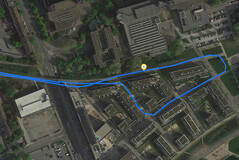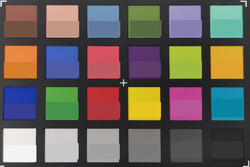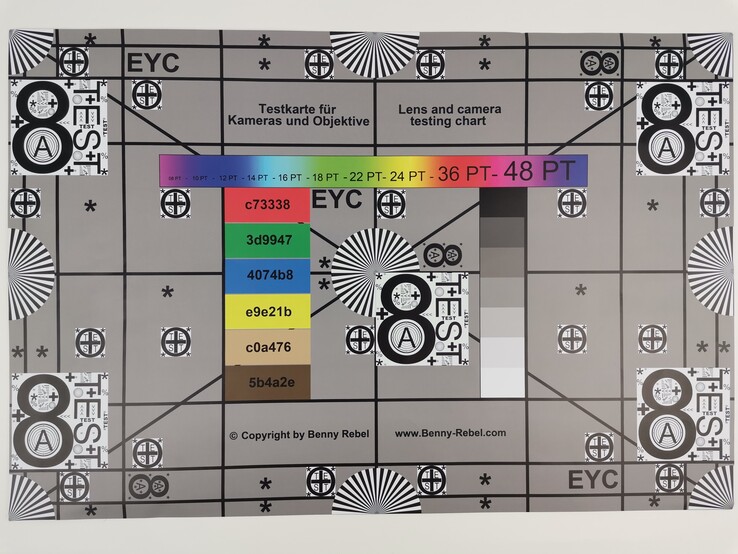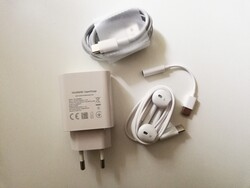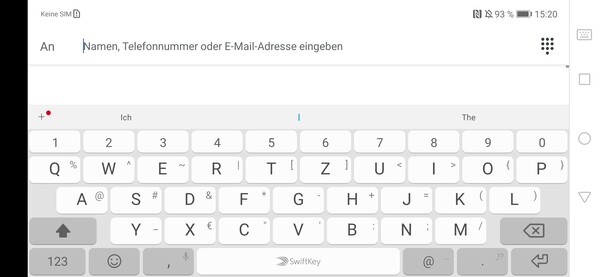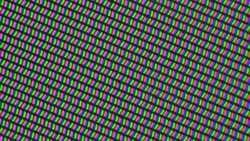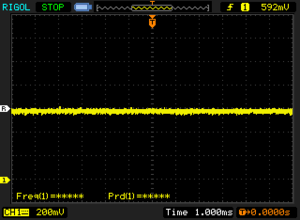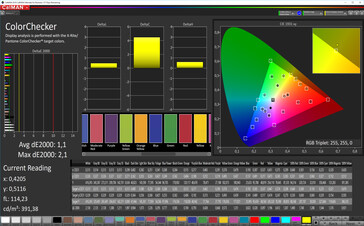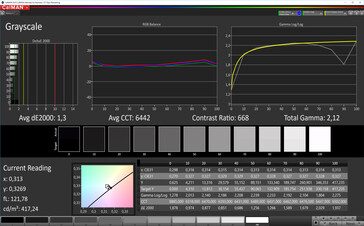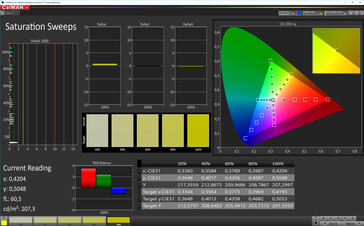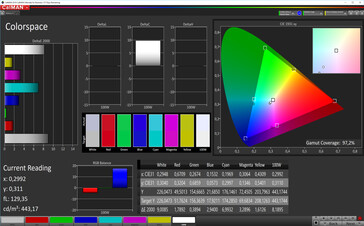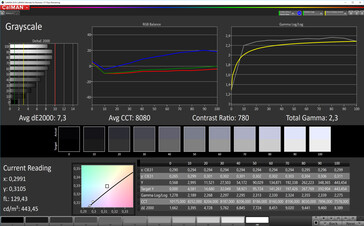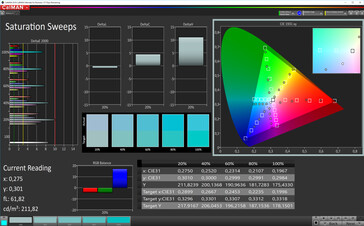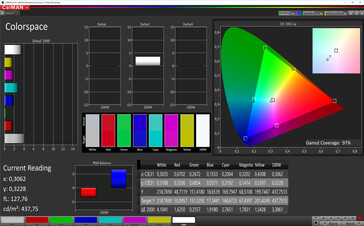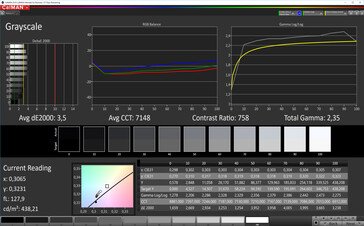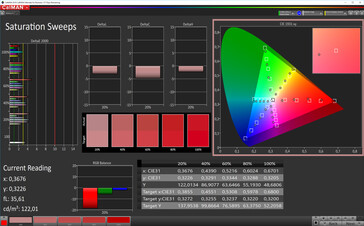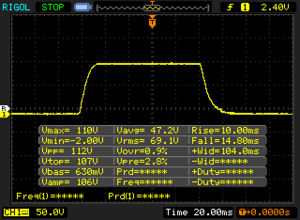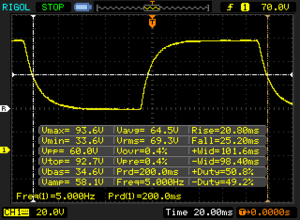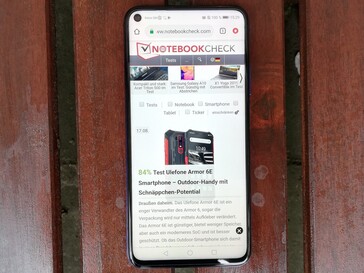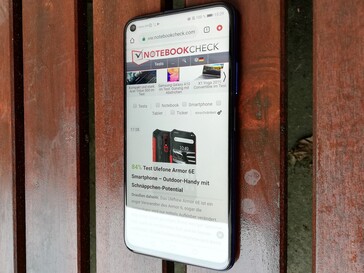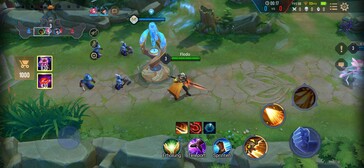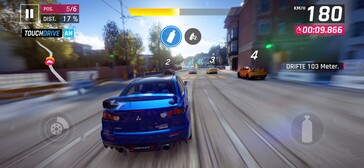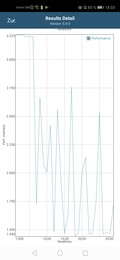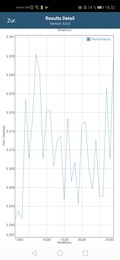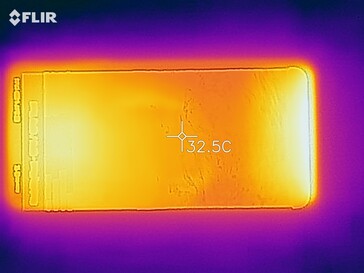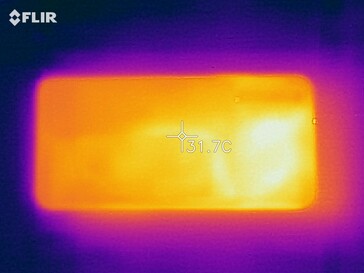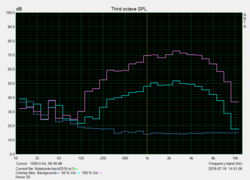Honor 20 Smartphone Review: a quad camera in a midrange smartphone
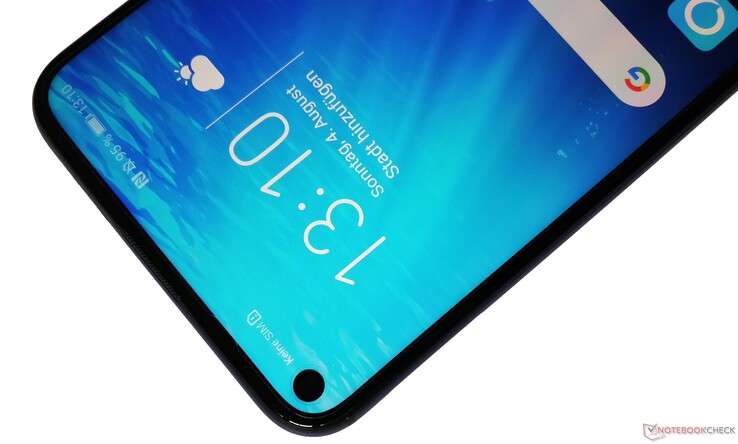
Last year's Honor 10 already proved to be a smartphone with a brilliant price-to-performance ratio and a great camera. Unfortunately, the Honor 20 has inherited the missing microSD card reader. But to make up for that, it now has a larger internal storage with a capacity of 128 GB. Honor has also equipped its new midrange smartphone with 6 GB of RAM, a HiSilicon Kirin 980 SoC and an ARM Mali G76 MP10 GPU. The Honor 20 Pro offers the same hardware but has even larger storage options.
We will find out whether the additional $100 surcharge for the Pro version is worth considering and compare our test unit to its competitors. These include the Xiaomi Mi 9T Pro, the Asus ZenFone 6 and the Google Pixel 3a XL. You can also add other smartphones to the comparison at the bottom of every table.
Case - Android smartphone with fingerprint reader on the side
The Honor 20 is available in Midnight Black and Sapphire Blue. Its metal frame has uniform coloring while the back features a slight color gradient. The camera with three lenses and a flash is positioned on the back in the top left corner and stands out slightly. Honor has included a smaller macro lens next to this unit. The fingerprint reader is positioned on the side and is easy to reach with the right thumb. The fingerprint reader also doubles as the power button. The volume rocker and nanoSIM slot sit tight in the case.
The overall workmanship is very good and we did not notice any shortcomings. The notification LED is positioned below the cover of the earpiece and blinks through the fine mesh.
Connectivity - DRM L1 but no card reader
The Honor 20 is equipped with a HiSilicon Kirin 980 SoC and an ARM Mali G76 MP10 GPU. Both the SoC and the GPU are from mid-2018 and were considered high-end chips when they first came out. They offer sufficient performance for a smooth-running system as well as more-demanding applications. The processors are supported by 6 GB of RAM and 128 GB of internal storage. The latter cannot be expanded as the Honor 20 is not equipped with a card reader. The two nanoSIM slots support LTE, but neither VoWLAN nor VoLTE were available on our test unit.
Apart from the usual sensors, our Honor smartphone also has an infrared port along the top, which can be used to control electronic devices. The USB Type-C port at the bottom is connected via the USB 2.0 standard, which means it offers rather slow transfer rates. The port still supports OTG functions such as charging external devices or connecting storage devices. Users who enjoy streaming will be pleased to find that they can watch Netflix and Amazon Prime in Full HD thanks to the DRM Widevine L1 support. The Camera2 API is set to "limited".
Software - Android Pie with recent updates
Owners of the Honor 20 will be using Android Pie (Version 9.0); the security patches were dated April 1, 2019 at the time of testing. The user interface is Honor's own Magic UI 2.1, which is strongly reminiscent of Huawei's EMUI surface and is very similar to Stock Android. The phone uses the manufacturer's own telephone and gallery apps. The settings menu is also structured slightly differently. Even newcomers will not take long to get used to these changes and all functions are easy to use.
Apart from Facebook, Amazon Alexa and booking.com, the Honor 20 also has some of the manufacturer's own apps preinstalled - for example the Honor app store and Huawei's AppGallery. These have special offers for users and recommendations for useful applications. While users can fully remove the previously mentioned third-party apps, the Honor apps can only be deactivated in the settings menu.
There was a new update available at the time of testing, which included security patches dated July 5, 2019.
Communication and GPS - impressive localization
The Honor 20 supports mobile connections using the GSM, 3G and LTE networks. The latter is supported up to category 21, which enables download rates of up to 1400 Mb/s and upload rates of up to 300 Mb/s. With only two bands for 2G and 3G, the compatibility for slower networks is very limited. The phone also supports NFC, Bluetooth 5.0 and Wi-Fi for short-range communication.
Our Wi-Fi test with the reference router Linksys EA8500 resulted in average download rates of 302 Mb/s and upload rates of 284 Mb/s. While the Android smartphone can use the fast 802.11ac standard in the 5-GHz band, the missing 2x2 MIMO antenna technology limits speeds and means that our test unit cannot keep up with the Google Pixel 3a XL, for example.
| Networking | |
| iperf3 transmit AX12 | |
| Google Pixel 3a XL | |
| Asus ZenFone 6 ZS630KL | |
| Xiaomi Mi 9T Pro | |
| Honor 20 | |
| Honor 20 Pro | |
| Honor 10 | |
| iperf3 receive AX12 | |
| Google Pixel 3a XL | |
| Asus ZenFone 6 ZS630KL | |
| Xiaomi Mi 9T Pro | |
| Honor 20 | |
| Honor 20 Pro | |
| Honor 10 | |
The GPS Test app helps us test the accuracy of the Honor 20's localization efforts. Our test unit has GPS, GLONASS and Beidou available and manages to position itself within four meters outdoors. The phone did manage to locate itself indoors, but the accuracy was reduced to within 20 meters.
Our obligatory bike ride showed that the Honor smartphone did very well at recording our route. While there were some minor deviations on long, straight stretches, the Android device turned out to be more precise than our reference navigation system Garmin Edge 500 when it came to bends in the road and sudden changes in direction. This makes the Honor 20 suitable for more-demanding navigation needs.
Telephone and Voice Quality - a good connection
The telephone app on the Honor 20 offers direct access to the dial pad. Two tabs at the bottom lead to the contacts and favorites. The Android smartphone offers medium volume during calls and manages to filter out ambient noise very well. However, you might still have some light difficulties when making calls on busy streets or in other loud surroundings. Our call partner had no difficulties understanding us in calm surroundings and we could hear them very well, too.
Users can connect headsets via Bluetooth 5.0 or USB Type-C. The device comes with a USB Type-C headset that reproduces voices well and is louder than the earpiece.
Cameras - quad camera with good low-light performance
The Honor 20 is equipped with a quad cam system, which consists of a 48-MP lens with an f/1.8 aperture, a wide-angle 16-MP lens with an aperture of f/2.2, a 2-MP lens for macro shots and another 2-MP lens for depth of field. The front camera has a 32-MP lens with an aperture of f/2.0. This enables detailed portrait shots, although these often appear a little washed-out. Fine structures are recorded nicely and areas of color are clearly delineated. Users can use the beautification mode as well as other effects such as making the background blurry. The camera also offers an AI mode, which automatically chooses the suitable settings for every subject. However, users cannot adjust these settings manually.
The main camera of the Honor 20 takes good panorama photos. Details and fine structures are recorded nicely and the edges of objects only become slightly blurry at high zoom levels. Dark areas are well illuminated, which means that objects in shade are still visible. Colors appear a little too bright and often look washed-out in close-up photos. Nonetheless, the subject is depicted in high detail and is well set off from the background. The macro function only becomes really useful on small subjects. The flower in our test image, for example, is reproduced in high details and good quality. Our test motif remains recognizable in bad lighting and there are no black areas either. The edges of objects start to become a little blurry, however, and surface structures are more washed-out. Users can use various modes such as portrait, night or panorama mode, to influence the resulting image. This camera also offers a pro mode, with which users can manually adjust the ISO, shutter speed, focus and white balance.
The video quality is similar to that of the photographs. Again, you can use a beautification function and color filters. The image stabilizer also manages to compensate for minor shakes. You can choose from the following resolutions in the settings menu:
- 4K (16:9) at 30 fps
- 1080p (19.5:9) at 30 fps
- 1080p (16:9) at 60 fps
- 1080p (16:9) at 30 fps
- 720p (16:9) at 30 fps
Videos can be encoded in H.265 or H.264.
The ColorChecker passport helps us control the color reproduction of the Honor 20 camera. Colors often appear brighter on the Honor 20's photos while dark grays are too dark.
The Honor smartphone manages to depict our test chart in high detail under controlled lighting. The photo retains fine details and structures, but again colors appear too bright. We also noticed that the bottom corners are significantly washed-out. With the brightness set to one lux, the test subject is just about visible. Rough structures remain blurry with washed-out edges.
Accessories and Warranty - great scope of delivery
The Honor 20 comes with a USB AC adapter and a connecting USB Type-C cable, a USB Type-C stereo headset as well as a USB-Type-C-to-3.5-mm-audio-jack adapter. The manufacturer's website also offers general smartphone accessories such as Bluetooth headphones, smart bands and more.
Honor gives users of the Honor 20 a warranty of 24 months.
Input Devices & Handling - preinstalled SwiftKey app
Users of the Honor 20 can use the keyboard app SwiftKey. This allows fast typing of long texts and can easily be adapted to your personal needs. The touchscreen reliably registers every input and its surface is easy to glide over, which means that users will have no difficulty with long drag-and-drop movements. The position sensor also adjusts the content quickly when the smartphone is tipped onto its side or back into portrait mode.
The fingerprint sensor on the right side of the case recognizes stored fingerprints quickly. Face recognition works even faster and we did not have any issues with this feature during testing.
Display - average screen with high resolution
The screen of the Honor 20 consists of a 6.26-inch IPS panel with a 19.5:9 aspect ratio and a resolution of 2340x1080 pixels. The average brightness is 481 cd/m², which is a little lower than those of the other smartphones in our comparison field. To make up for this, the Honor's brightness distribution is very good at 95%. We measured a maximum brightness of 445 cd/m² with the ambient light sensor deactivated and 471 cd/m² in the APL50 test.
Our measurements also show that the phone does not use PWM to regulate its brightness. This means users with sensitive eyes do not need to worry about getting headaches or eye strain from using this smartphone.
| |||||||||||||||||||||||||
Brightness Distribution: 95 %
Center on Battery: 491 cd/m²
Contrast: 875:1 (Black: 0.55 cd/m²)
ΔE ColorChecker Calman: 1.1 | ∀{0.5-29.43 Ø4.78}
ΔE Greyscale Calman: 1.3 | ∀{0.09-98 Ø5}
98.6% sRGB (Calman 2D)
Gamma: 2.12
CCT: 6442 K
| Honor 20 IPS, 2340x1080, 6.3" | Honor 20 Pro IPS, 2340x1080, 6.3" | Honor 10 IPS, 2280x1080, 5.8" | Xiaomi Mi 9T Pro AMOLED, 2340x1080, 6.4" | Asus ZenFone 6 ZS630KL IPS, 2340x1080, 6.4" | Google Pixel 3a XL OLED, 2160x1080, 6" | |
|---|---|---|---|---|---|---|
| Screen | -119% | -47% | -33% | -66% | -12% | |
| Brightness middle (cd/m²) | 481 | 514 7% | 555 15% | 594 23% | 569 18% | 409 -15% |
| Brightness (cd/m²) | 481 | 495 3% | 537 12% | 607 26% | 537 12% | 410 -15% |
| Brightness Distribution (%) | 95 | 92 -3% | 94 -1% | 91 -4% | 79 -17% | 96 1% |
| Black Level * (cd/m²) | 0.55 | 0.5 9% | 0.39 29% | 0.31 44% | ||
| Contrast (:1) | 875 | 1028 17% | 1423 63% | 1835 110% | ||
| Colorchecker dE 2000 * | 1.1 | 5.1 -364% | 2.3 -109% | 1.51 -37% | 3.5 -218% | 1.3 -18% |
| Colorchecker dE 2000 max. * | 2.1 | 7.8 -271% | 6 -186% | 4.27 -103% | 6 -186% | 2.3 -10% |
| Greyscale dE 2000 * | 1.3 | 5.8 -346% | 3.9 -200% | 2.6 -100% | 5.1 -292% | 1.5 -15% |
| Gamma | 2.12 104% | 2.3 96% | 2.19 100% | 2.219 99% | 2.36 93% | 2.22 99% |
| CCT | 6442 101% | 8142 80% | 6212 105% | 6390 102% | 6827 95% | 6621 98% |
* ... smaller is better
Screen Flickering / PWM (Pulse-Width Modulation)
| Screen flickering / PWM not detected | |||
In comparison: 53 % of all tested devices do not use PWM to dim the display. If PWM was detected, an average of 8108 (minimum: 5 - maximum: 343500) Hz was measured. | |||
The contrast ratio of the Honor 20 is comparatively low at 875:1, while the black value is accordingly high at 0.55 cd/m². This gives blacks a gray haze and makes colors appear blander. The Honor 20 lands on last place for both values compared to its competitors.
Users can freely adjust the color display of the Honor 20 on a scale or choose from preset profiles. Both the color mode and color temperature can be adjusted. The screen shows very balanced colors when using a combination of normal and standard. Adjusting the settings to vivid and standard increases blue tones significantly, leading to a cooler display. Vivid and warm increases all colors, making them appear stronger. Users can also activate an eye-protection mode, which makes the display warmer by increasing yellows (this can also be adjusted).
Display Response Times
| ↔ Response Time Black to White | ||
|---|---|---|
| 24.8 ms ... rise ↗ and fall ↘ combined | ↗ 10 ms rise | |
| ↘ 14.8 ms fall | ||
| The screen shows good response rates in our tests, but may be too slow for competitive gamers. In comparison, all tested devices range from 0.1 (minimum) to 240 (maximum) ms. » 57 % of all devices are better. This means that the measured response time is worse than the average of all tested devices (20.2 ms). | ||
| ↔ Response Time 50% Grey to 80% Grey | ||
| 46 ms ... rise ↗ and fall ↘ combined | ↗ 20.8 ms rise | |
| ↘ 25.2 ms fall | ||
| The screen shows slow response rates in our tests and will be unsatisfactory for gamers. In comparison, all tested devices range from 0.165 (minimum) to 636 (maximum) ms. » 78 % of all devices are better. This means that the measured response time is worse than the average of all tested devices (31.6 ms). | ||
The IPS panel of the Honor 20 has very stable viewing angles. Content can be read from almost any angle without the image being warped or colors inverted. The Android phone can be used from very unusual positions as long as there are no reflections that make reading the screen difficult.
Performance - average performance in normal mode
The Honor 20 is equipped with a HiSilicon Kirin 980 and 6 GB of RAM, which ensure a smooth system. The SoC is accompanied by an ARM Mali G76 MP10 and internal storage with a capacity of 128 GB. This hardware should be able to support more-demanding applications and we do not expect any issues with system performance.
The Honor 20 has a performance mode that can be activated in order to improve performance. We decided to run our benchmarks without this mode. The results position our test unit in the bottom midrange of our comparison devices. The results are slightly lower in graphically demanding benchmarks, but the Honor 20 can often still beat the Google Pixel 3a XL. Running the benchmarks with the performance mode turned on significantly improves results. For example, our test unit reaches 4302 instead of 2106 points in the 3DMark Sling Shot Extreme - Vulkan benchmark.
| PCMark for Android | |
| Work performance score (sort by value) | |
| Honor 20 | |
| Honor 20 Pro | |
| Honor 10 | |
| Xiaomi Mi 9T Pro | |
| Asus ZenFone 6 ZS630KL | |
| Google Pixel 3a XL | |
| Average HiSilicon Kirin 980 (9728 - 13531, n=10) | |
| Work 2.0 performance score (sort by value) | |
| Honor 20 | |
| Honor 20 Pro | |
| Honor 10 | |
| Xiaomi Mi 9T Pro | |
| Asus ZenFone 6 ZS630KL | |
| Google Pixel 3a XL | |
| Average HiSilicon Kirin 980 (7567 - 9326, n=10) | |
| GFXBench 3.1 | |
| on screen Manhattan ES 3.1 Onscreen (sort by value) | |
| Honor 20 | |
| Honor 20 Pro | |
| Honor 10 | |
| Xiaomi Mi 9T Pro | |
| Asus ZenFone 6 ZS630KL | |
| Google Pixel 3a XL | |
| Average HiSilicon Kirin 980 (24 - 54, n=10) | |
| Average of class Smartphone (11 - 166, n=157, last 2 years) | |
| 1920x1080 Manhattan ES 3.1 Offscreen (sort by value) | |
| Honor 20 | |
| Honor 20 Pro | |
| Honor 10 | |
| Xiaomi Mi 9T Pro | |
| Asus ZenFone 6 ZS630KL | |
| Google Pixel 3a XL | |
| Average HiSilicon Kirin 980 (25 - 56, n=10) | |
| Average of class Smartphone (8.4 - 413, n=156, last 2 years) | |
| AnTuTu v7 - Total Score (sort by value) | |
| Honor 20 | |
| Honor 20 Pro | |
| Honor 10 | |
| Xiaomi Mi 9T Pro | |
| Asus ZenFone 6 ZS630KL | |
| Google Pixel 3a XL | |
| Average HiSilicon Kirin 980 (268359 - 322616, n=10) | |
The Honor 20 again reaches average results in our browser benchmarks. The browser runs smoothly in everyday use and websites are loaded quickly. Users will not have to wait very long for media content to load, either.
| Jetstream 2 - 2.0 Total Score | |
| Average of class Smartphone (23.8 - 387, n=149, last 2 years) | |
| Asus ZenFone 6 ZS630KL (Chrome 75) | |
| Xiaomi Mi 9T Pro (Chrome 75) | |
| Average HiSilicon Kirin 980 (48.4 - 60.9, n=6) | |
| Honor 20 Pro (Chrome 75) | |
| Honor 20 (Chrome 75) | |
| Google Pixel 3a XL (Chrome 73) | |
| Honor 10 (Chrome 74) | |
| Speedometer 2.0 - Result 2.0 | |
| Average of class Smartphone (15.2 - 643, n=122, last 2 years) | |
| Asus ZenFone 6 ZS630KL (Chrome 75) | |
| Average HiSilicon Kirin 980 (58.3 - 67.8, n=6) | |
| Honor 20 Pro (Chome 75) | |
| Honor 20 (Chrome 75) | |
| Xiaomi Mi 9T Pro (Chrome 75) | |
| Google Pixel 3a XL (Chrome 73) | |
| Honor 10 (Chrome 74) | |
| WebXPRT 3 - Overall | |
| Average of class Smartphone (38 - 380, n=31, last 2 years) | |
| Asus ZenFone 6 ZS630KL (Chrome 75) | |
| Xiaomi Mi 9T Pro (Chrome 75) | |
| Average HiSilicon Kirin 980 (86 - 124, n=10) | |
| Honor 20 Pro (Chrome 75) | |
| Honor 20 (Chrome 75) | |
| Honor 10 (Chrome 66) | |
| Google Pixel 3a XL (Chrome 73) | |
| Octane V2 - Total Score | |
| Average of class Smartphone (2228 - 121337, n=197, last 2 years) | |
| Asus ZenFone 6 ZS630KL (Chrome 75) | |
| Average HiSilicon Kirin 980 (20618 - 23285, n=10) | |
| Honor 20 (Chrome 75) | |
| Honor 20 Pro (Chrome 75) | |
| Xiaomi Mi 9T Pro (Chrome 75) | |
| Google Pixel 3a XL (Chrome 73) | |
| Honor 10 (Chrome 66) | |
| Mozilla Kraken 1.1 - Total | |
| Honor 10 (Chrome 66) | |
| Google Pixel 3a XL (Chrome 73) | |
| Honor 20 (Chrome 75) | |
| Honor 20 Pro (Chrome 75) | |
| Xiaomi Mi 9T Pro (Chrome 75) | |
| Average HiSilicon Kirin 980 (1948 - 3098, n=10) | |
| Asus ZenFone 6 ZS630KL (Chrome 75) | |
| Average of class Smartphone (257 - 28190, n=154, last 2 years) | |
* ... smaller is better
The Honor 20 is equipped with 128-GB eMMC flash storage, of which around 116 GB is available to the user for apps or storing personal data. The write and read rates of our test unit are similar to those of other smartphones with UFS 2.1 storage devices in our comparison field.
| Honor 20 | Honor 20 Pro | Honor 10 | Xiaomi Mi 9T Pro | Asus ZenFone 6 ZS630KL | Google Pixel 3a XL | Average 128 GB UFS 2.1 Flash | Average of class Smartphone | |
|---|---|---|---|---|---|---|---|---|
| AndroBench 3-5 | 10% | -1% | -4% | 0% | -39% | 6% | 304% | |
| Sequential Read 256KB (MB/s) | 829 | 843 2% | 828 0% | 809 -2% | 831 0% | 315.6 -62% | 761 ? -8% | 2228 ? 169% |
| Sequential Write 256KB (MB/s) | 196.4 | 247.3 26% | 192.1 -2% | 196.9 0% | 195.6 0% | 179.1 -9% | 296 ? 51% | 1852 ? 843% |
| Random Read 4KB (MB/s) | 156.7 | 173.6 11% | 145.9 -7% | 142.5 -9% | 153.3 -2% | 92.1 -41% | 154 ? -2% | 296 ? 89% |
| Random Write 4KB (MB/s) | 157 | 160.4 2% | 163 4% | 148.5 -5% | 160.2 2% | 87 -45% | 130.4 ? -17% | 339 ? 116% |
Games - good gaming performance
The graphics unit in the Honor 20 is an ARM Mali-G76 MP10. It can display current games smoothly at high details. We did not notice any judders in the titles we tested (Arena of Valor and Asphalt 9: Legends) even without activating the performance mode. There were no issues controlling the games via the touchscreen. The position sensor also responded reliably and translated our movements into the game.
Emissions - average speakers
Temperature
According to our measurements, the Honor 20 reaches surface temperatures of up to 30.9 °C while idling and up to 34.9 °C under load. Subjectively, this only makes the phone feel warm and never too hot to hold. The performance drops quickly during the demanding GFXBench continual load test. While it remains relatively constant during the ES 2.0 round, the results drop significantly in the more-demanding Manhattan 3.1 test. This means that users will have to expect a decrease in performance when using very demanding applications.
(+) The maximum temperature on the upper side is 34.9 °C / 95 F, compared to the average of 35.2 °C / 95 F, ranging from 21.9 to 247 °C for the class Smartphone.
(+) The bottom heats up to a maximum of 34.1 °C / 93 F, compared to the average of 34 °C / 93 F
(+) In idle usage, the average temperature for the upper side is 28.9 °C / 84 F, compared to the device average of 32.9 °C / 91 F.
Speakers
The speakers of the Honor 20 offer average volume and a rather unbalanced sound spectrum. Voices are reproduced well at low volume, but music starts to sound rather tinny at medium volume. While the Honor 20 speakers can be used to watch an occasional video or listen to a song, we would recommend using external speakers or headphones for regular use. These can be connected via the USB Type-C port (either with the included headset or using the included USB-Type-C-to-3.5-mm-audio-jack adapter). The audio jack adapter is nice and tight and does not have a negative impact on audio quality. Another option to connect speakers or headphones is via Bluetooth 5.0, which also supports aptX HD, LDAC and HWA.
Honor 20 audio analysis
(±) | speaker loudness is average but good (81 dB)
Bass 100 - 315 Hz
(-) | nearly no bass - on average 20.8% lower than median
(±) | linearity of bass is average (12.9% delta to prev. frequency)
Mids 400 - 2000 Hz
(+) | balanced mids - only 4.3% away from median
(+) | mids are linear (4.2% delta to prev. frequency)
Highs 2 - 16 kHz
(±) | higher highs - on average 5.5% higher than median
(+) | highs are linear (5% delta to prev. frequency)
Overall 100 - 16.000 Hz
(±) | linearity of overall sound is average (22.3% difference to median)
Compared to same class
» 46% of all tested devices in this class were better, 7% similar, 47% worse
» The best had a delta of 11%, average was 35%, worst was 134%
Compared to all devices tested
» 64% of all tested devices were better, 6% similar, 30% worse
» The best had a delta of 4%, average was 24%, worst was 134%
Google Pixel 3a XL audio analysis
(+) | speakers can play relatively loud (82.2 dB)
Bass 100 - 315 Hz
(-) | nearly no bass - on average 20.2% lower than median
(±) | linearity of bass is average (11.3% delta to prev. frequency)
Mids 400 - 2000 Hz
(+) | balanced mids - only 3.7% away from median
(+) | mids are linear (4.3% delta to prev. frequency)
Highs 2 - 16 kHz
(+) | balanced highs - only 4.2% away from median
(±) | linearity of highs is average (8% delta to prev. frequency)
Overall 100 - 16.000 Hz
(±) | linearity of overall sound is average (16.5% difference to median)
Compared to same class
» 7% of all tested devices in this class were better, 5% similar, 88% worse
» The best had a delta of 11%, average was 35%, worst was 134%
Compared to all devices tested
» 27% of all tested devices were better, 6% similar, 67% worse
» The best had a delta of 4%, average was 24%, worst was 134%
Battery Life - Android smartphone with a good battery life
Power Consumption
According to our measurements, the Honor 20 consumes a minimum of 0.88 watts while idling and up to 6.63 watts under load. This is an average consumption rate for our comparison field. The included charger has a rated output of 22.5 watts, which is easily large enough to always provide the Android smartphone with sufficient power.
| Off / Standby | |
| Idle | |
| Load |
|
Key:
min: | |
| Honor 20 3750 mAh | Honor 20 Pro 4000 mAh | Honor 10 3400 mAh | Xiaomi Mi 9T Pro 4000 mAh | Asus ZenFone 6 ZS630KL 5000 mAh | Google Pixel 3a XL 3700 mAh | Average HiSilicon Kirin 980 | Average of class Smartphone | |
|---|---|---|---|---|---|---|---|---|
| Power Consumption | 3% | -10% | 12% | -7% | 30% | 0% | -9% | |
| Idle Minimum * (Watt) | 0.88 | 0.9 -2% | 1.12 -27% | 0.7 20% | 0.81 8% | 0.7 20% | 0.802 ? 9% | 0.842 ? 4% |
| Idle Average * (Watt) | 2.27 | 1.4 38% | 2.26 -0% | 1 56% | 2.35 -4% | 1.63 28% | 2.07 ? 9% | 1.439 ? 37% |
| Idle Maximum * (Watt) | 2.34 | 2.6 -11% | 2.3 2% | 1.3 44% | 2.37 -1% | 1.67 29% | 2.38 ? -2% | 1.624 ? 31% |
| Load Average * (Watt) | 4.81 | 5 -4% | 5.14 -7% | 5.2 -8% | 5.33 -11% | 2.64 45% | 4.87 ? -1% | 7.03 ? -46% |
| Load Maximum * (Watt) | 6.63 | 6.9 -4% | 7.89 -19% | 10 -51% | 8.55 -29% | 4.62 30% | 7.46 ? -13% | 11.3 ? -70% |
* ... smaller is better
Battery Runtime
The Honor 20 managed to keep going for almost 11 hours in our realistic Wi-Fi test. This is what we would have expected from this battery capacity, although some smartphones such as the Google Pixel 3a XL keep going for a little longer with a similar-size battery.
The included USB AC adapter supports Huawei's SuperCharge technology. This means that the 3700-mAh battery can be fully recharged in around 1.5 hours.
| Honor 20 3750 mAh | Honor 20 Pro 4000 mAh | Honor 10 3400 mAh | Xiaomi Mi 9T Pro 4000 mAh | Asus ZenFone 6 ZS630KL 5000 mAh | Google Pixel 3a XL 3700 mAh | |
|---|---|---|---|---|---|---|
| Battery runtime | 43% | 2% | 35% | 109% | 37% | |
| Reader / Idle (h) | 21 | 33.8 61% | 19.4 -8% | 29.5 40% | 35.2 68% | 30.4 45% |
| H.264 (h) | 10.1 | 15.2 50% | 11 9% | 16.5 63% | 35.6 252% | 16 58% |
| WiFi v1.3 (h) | 10.9 | 13.3 22% | 11.1 2% | 12.7 17% | 13.4 23% | 11.8 8% |
| Load (h) | 3.5 | 4.8 37% | 3.6 3% | 4.2 20% | 6.8 94% | 4.8 37% |
Pros
Cons
Verdict - a lot of storage and a good camera
The Honor 20 proves to be an impressively well-rounded smartphone. It is available for just under $500 and offers good camera quality, a lot of internal storage and sufficient performance for both everyday use and more-demanding applications. The device's performance can be enhanced by activating its high-performance mode, although this impacts battery life. This is very good at almost 11 hours and can easily keep up with its competition.
The Honor 20 scores well with its good camera and decent battery life. Users will have to make do without a microSD card.
We did not find much to criticize about the Honor 20: Its punch-hole design is a matter of taste and some users might not appreciate the fingerprint sensor being placed on the side. It is a real shame that Honor hasn't included a microSD card reader, particularly since the dualSIM slot could have easily been made into a hybrid slot.
Honor 20
- 08/19/2019 v6 (old)
Mike Wobker




